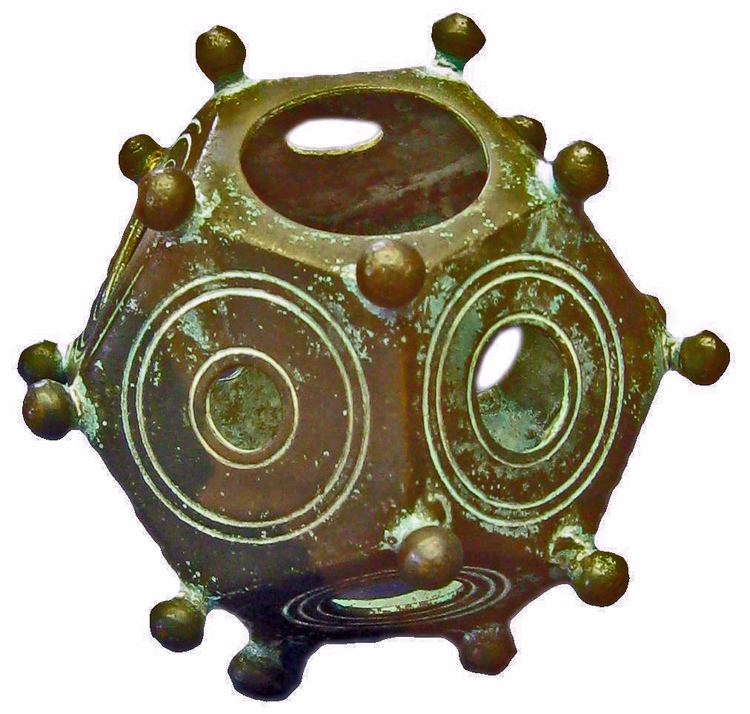 | ||
A Roman dodecahedron is a small hollow object made of bronze or stone, with a dodecahedral shape: twelve flat pentagonal faces, each face having a circular hole of varying diameter in the middle, the holes connecting to the hollow center. Roman dodecahedra date from the 2nd or 3rd centuries CE.
About a hundred of these dodecahedra have been found from Wales to Hungary and Spain and to the east of Italy, with most found in Germany and France. Ranging from 4 to 11 centimetres (1.6 to 4.3 in) in size, they also vary in terms of textures. Most are made of bronze but some are made of stone. A Roman icosahedron has also come to light after having long been misclassified as a dodecahedron.
No mention of them has been found in contemporary accounts or pictures of the time. Speculated uses include candlestick holders (wax was found inside two examples); dice; survey instruments for estimating distances to (or sizes of) distant objects; devices for determining the optimal sowing date for winter grain; gauges to calibrate water pipes or army standard bases. Use as a measuring instrument of any kind seems improbable since the dodacahedrons were not standardised and come in many sizes and arrangements of their openings. It has also been suggested that they may have been religious artifacts, or even fortune telling devices. This latter speculation is based on the fact that most of the examples have been found in Gallo-Roman sites. Several dodecahedra were found in coin hoards, providing evidence that their owners considered them valuable objects. Smaller dodecahedra with the same features (holes and knobs) and made from gold have been found in South-East Asia. They have been used for decorative purposes and the earliest items appear to be from the Roman epoch.
